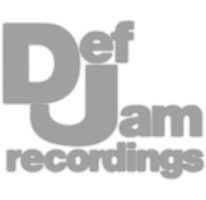Making a vocal brighter includes affecting the high-frequency range in one way or another including using an EQ, an Airband EQ, an exciter, saturator, or other various techniques. Using certain types of reverb can also create a bright vocal if the reflections are in the high-frequency range.
When saturating a full mix it first helps to know what saturation is doing to your mix, and how the harmonics used will improve its sound. You can use saturation or analog emulation plugins, or you can combine compression and distortion to create your own effect.
1. Arturia - V76 Pre 2. Voxengo - Teote 3. Melda Audios - MTurboComp Get a FREE Mastered Sample of Your Song ➜ Arturia - V76 Pre
When mixing your vocal, you can use equalization in advanced ways - like using a side-chain dynamic EQ technique to separate your vocal and another instrument. Or you can use modulation and saturation to alter the frequency response in either a dynamic or time-based way.
When saturating your signal, keep in mind how the harmonic formation created by the saturator will impact the tone and timbre of the signal. By knowing these different formations and how to achieve them, you can accomplish saturation that also equalizes, and even stereo expands your signal.
1. Pro R by FabFilter 2. Satin by u-he 3. Ozone Izotope Get a FREE Mastered Sample of Your Song ➜ Pro R by FabFilter
When trying to achieve advanced compression during the mastering stage, try using upward and downward compression, splitting your stereo signal into separate left and right channels, or automating various functions of your compression. Emulating analog equipment is also helpful, and can be done with separate compression and distortion plugins.
When mixing in FL Studio, after you import your stems or tracks, you’ll need to route each track to a distinct channel fader in the mixer. Once you’ve done that you can begin by adding some of the useful stock plugins. They provide, like Maximus, soundgoodizer, and more.
When affecting your vocal, it’s best to start with equalization and understand what each frequency range is responsible for. From there you can utilize compression, saturation, resonant frequency attenuation, reverb, modulation, and re-amping to better control the dynamics, overall quality, and tone of your vocal.
When making your mix more balanced, use a frequency and image analyzer to check if your mix is within a reasonable range. Additionally, you can equalize your kick and bass’s fundamental frequencies, use various compression techniques, and equalize using reverb reflections to make your mix balanced.
When trying to understand limiters, know first and foremost that they are attenuators or compressors with an instant attack time and often include a brick-wall ceiling. The first few dB of attenuation is difficult to hear but after about 5dB of attenuation, small amounts of distortion will become noticeable.
If you’re trying to make fire vocals, use compression, balancing EQ, an air EQ, and temporal effects like reverb and delay to control, clarify, and thicken your vocal. After your vocal is balanced and practical processing has been used, introduce advanced effects for a creative sound.
When using digital reverb there are 2 main types you'll come across, Algorithmic and Convolution. Algorithmic is incredibly versatile and can emulate multiple classic types of reverb by using delay taps and filtering; convolution allows you to use any impulse response to define the characteristics of a space.
If you’re mixing low frequencies, the best thing you can do is find ways to separate instruments that are heavily overlapping. If you separate them via distortion, equalization, transient shaping, r other means, your low end has a better chance of sounding clearer and more impactful.
When making your vocals sounds warm, you can amplify your fundamental, use transformer or tube saturation, and expand low frequencies. Then you can introduce some more creative techniques like parallel upward compression only on the lows, or maybe doubling the vocal with a formant shifted version.









